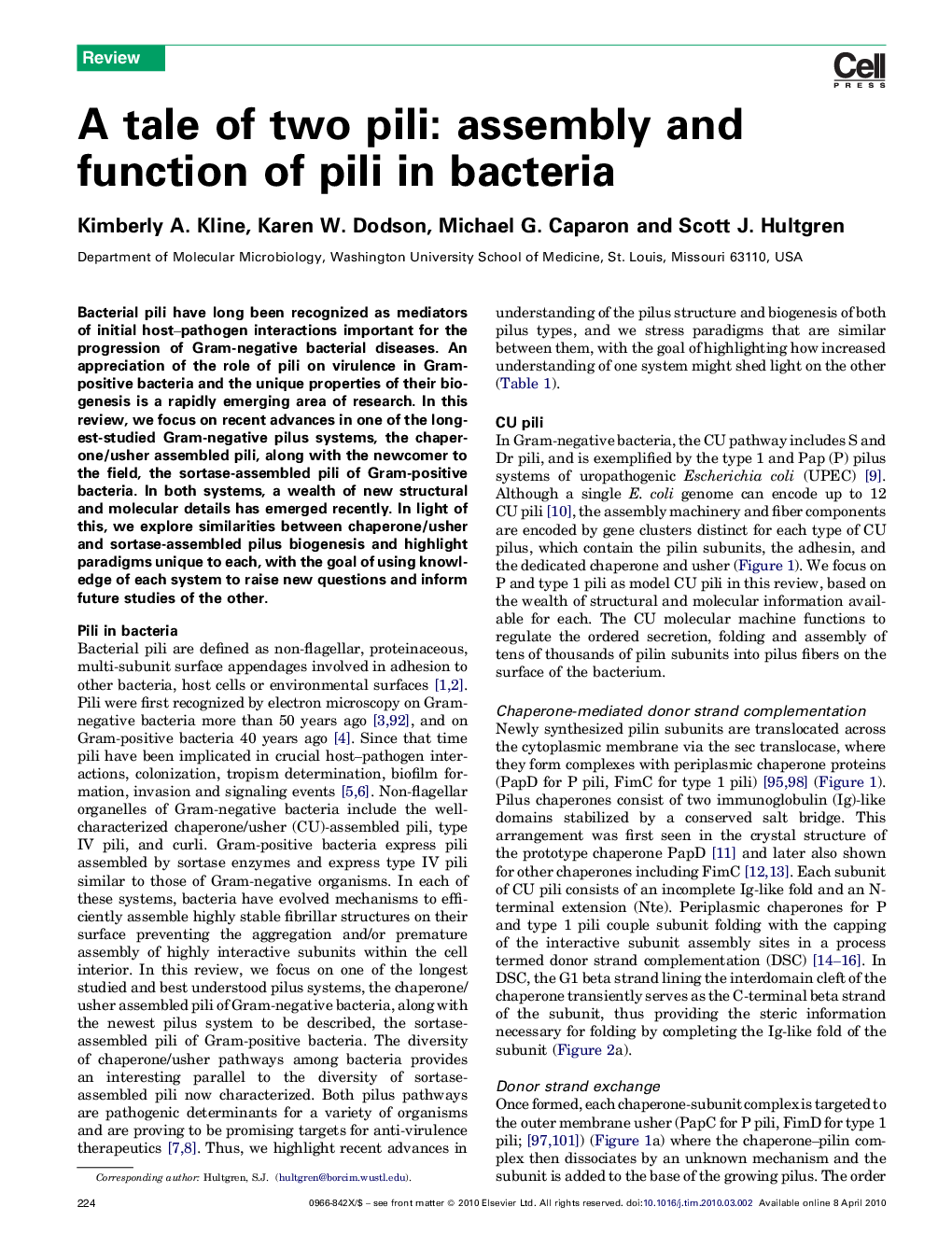| Article ID | Journal | Published Year | Pages | File Type |
|---|---|---|---|---|
| 3422421 | Trends in Microbiology | 2010 | 9 Pages |
Bacterial pili have long been recognized as mediators of initial host–pathogen interactions important for the progression of Gram-negative bacterial diseases. An appreciation of the role of pili on virulence in Gram-positive bacteria and the unique properties of their biogenesis is a rapidly emerging area of research. In this review, we focus on recent advances in one of the longest-studied Gram-negative pilus systems, the chaperone/usher assembled pili, along with the newcomer to the field, the sortase-assembled pili of Gram-positive bacteria. In both systems, a wealth of new structural and molecular details has emerged recently. In light of this, we explore similarities between chaperone/usher and sortase-assembled pilus biogenesis and highlight paradigms unique to each, with the goal of using knowledge of each system to raise new questions and inform future studies of the other.
